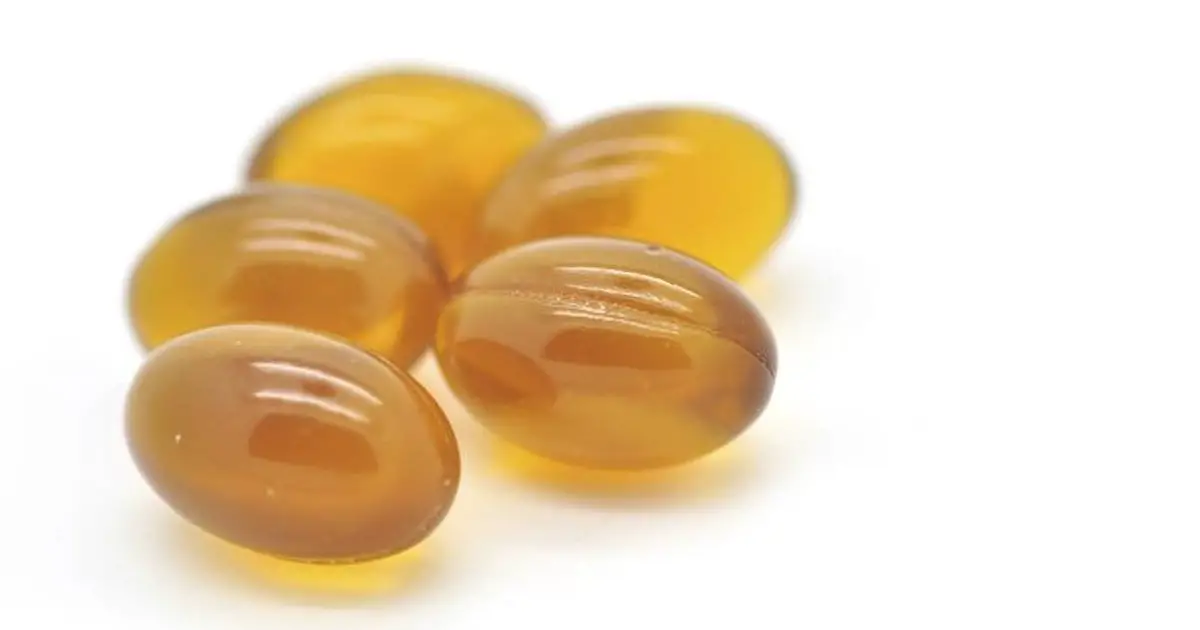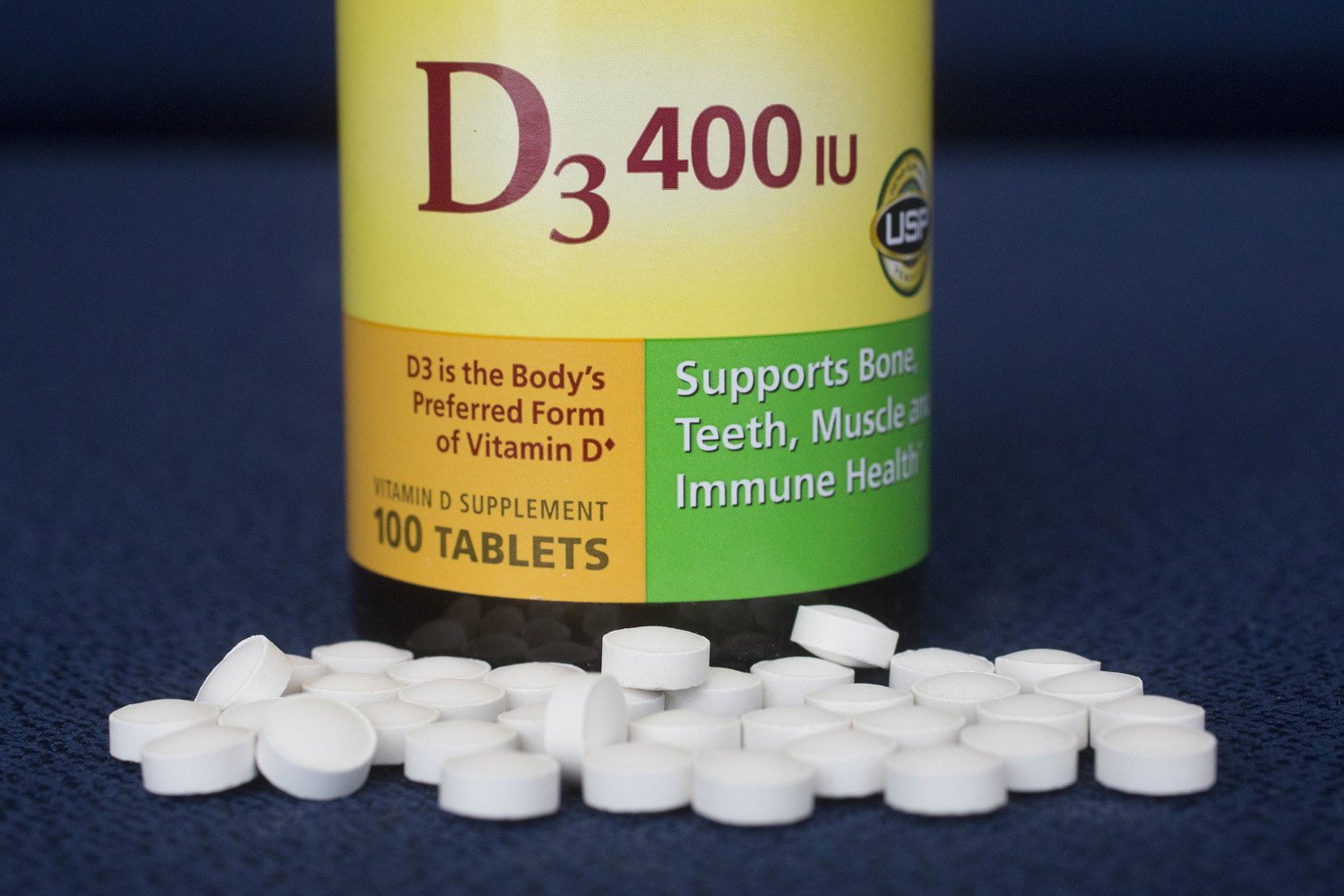Where Does Vitamin D Come From
The Sun
Our bodies make vitamin D when our skin is exposed to the sun. It’s hard to get enough vitamin D from the sun, though. Most kids and adults spend lots of time indoors at school and work. When outdoors, it’s important to protect skin to prevent skin cancer and skin damage from too much sun exposure.
Food
Very few foods have vitamin D naturally. The foods with the most are fatty fish , liver, eggs and fish oils. Kids don’t eat these foods a lot. That’s why food companies add vitamin D to milk, yogurt, baby formula, juice, cereal, and other foods.
Adding vitamin D to foods is called “fortifying.” It’s helpful, but it still may not be enough.
Supplements
To get enough vitamin D, children often need to take a multivitamin with vitamin D or a vitamin D supplement. Vitamin D is sometimes labeled as vitamin D3.
You can buy vitamin D pills, gummies, chewables, liquids, and sprays in stores without a prescription. Ask your child’s health care provider for advice on choosing the right one.
Who Is At Risk
Vitamin D deficiency is more common than many people realize. Around 1 billion people worldwide are deficient in the nutrient. People who are at risk of vitamin deficiency include those who live in climates that dont get a lot of sun and people who eat a diet low in the nutrient, such as a vegan diet. At-risk patients can also include those who have health conditions that prevent proper nutrient absorption. Older patients and those with dark skin pigmentation are also in the high-risk group.
What Doses Are Available
Most supplement manufacturers have to keep their pills small enough for the average person to swallow comfortably. The most common dosage of vitamin D from supplements is 400 IU, the Linus Pauling Institute reports, but they’re also available in 1000 IU and 2000 IU. Some calcium supplements also contain vitamin D.
Recommended Reading: Why Do People Need Vitamin D
Is Vitamin D Water Soluble
No, vitamin D is fat soluble. This means it is stored within our adipose tissue and small amounts can be mobilized if our daily intake temporarily falters. Other fat-soluble vitamins are vitamin A, vitamin E and vitamin K. Because it is fat soluble, vitamin D toxicity can occur if too much is taken.
Vitamin D deficiency is prevalent among obese people, because greater amounts of vitamin D are locked up in their adipose tissue , rather than in the blood where it can be used. Obese people are also less likely to eat foods naturally high in vitamin D or expose their skin to sunlight.
Why Would A Doctor Prescribe Vitamin D

Vitamin D prescriptions might be on the rise. One study found that testing for vitamin D deficiencies and subsequent prescriptions of the fat soluble vitamin increased more than sevenfold between 2008 and 2013. Why the huge increase? Researchers believe that it was due to a global increase in awareness of patients who are vitamin D deficient, rather than an actual increase in need.
So why would a doctor prescribe vitamin D supplementation? There are several reasons, but it starts with the vitamins accessibility.
Recommended Reading: What Vitamins Are In Vitamin B Complex
Your Value Is Between 80
These values are only slightly above those that can be achieved naturally by exposing the skin to the sunlight. It is assumed that these values cannot be achieved without taking vitamin D in dietary supplement form. To date, no risks are known which would result from consistently high values in the range of 80-100 ng/ml.
What Is Vitamin D Deficiency
Vitamin D deficiency is when levels of vitamin D in your body fall below those recommended as necessary to ensure all the processes in your body that rely on vitamin D can function properly.
Currently, there is controversy regarding what is the cut-off level for vitamin D deficiency with recommendations ranging from less than 20 ng/ml of 25D to less than 12 ng/ml of 25D.
Don’t Miss: What Does Vitamin D2 Do For You
How Quickly Can You Make Vitamin D From The Sun
Production of vitamin D via our skin is efficient and represents an easy, reliable way for most people to get enough vitamin D.
Of course, how long you need to stay in the sun for depends on your age, skin type and color, the season, and the time of the day but for most people, 10 minutes of summer skin on exposed skin, without sunblock, is considered sufficient.
Your Value Is Between 100
These values are considered to be too high, but are not classified as harmful to health. Nevertheless, you should reduce your 25D value to below 100 ng/ml. To achieve this, simply stop taking vitamin D in dietary supplement form and do not sunbathe. After roughly 3 months, have your 25D level retested. After your Vitamin D value is back in the normal range, adjust your vitamin D intake accordingly.
Also Check: What’s The Best Mens Vitamin For Energy
Who Should Be Screened For Vitamin D Deficiency
Most experts are against routine screening for vitamin D deficiency. This is because:
- Vitamin D testing is considerably more expensive than supplements
- No clear cut-off point for deficiency has been agreed upon
- Routine screening can lead to overtreatment of perceived vitamin D deficiency.
Most experts recommend that babies, children, and adults who are at high risk of vitamin D deficiency should be prescribed supplements without testing for deficiency, even if they dont have any symptoms.
Testing may be appropriate in people who are suspected of having severe vitamin D deficiency. In these cases, blood levels of calcium, phosphate, and alkaline phosphatase kidney function and other tests should be investigated as well.
Vitamin D testing is appropriate for people with:
- low calcium or phosphate levels or an unexplained increase in serum alkaline phosphatase
- atypical osteoporosis
- unexplained limb pain near a joint in older people
- unusual fractures, unexplained bone pain, or other symptoms suggesting metabolic bone disease.
Some people may need a referral to a specialist if it is discovered that they have a metabolic bone disease rather than a simple vitamin D deficiency.
Where Can I Get Vitamin D From
During the summer months in the UK most people can get all their vitamin D from the sun. As well as through sunlight we can also get vitamin D from certain foods such as oily fish, eggs and fortified cereals. You can also get vitamin D through supplements, the NHS recommend taking 10mcg of vitamin D a day during autumn and winter.
Recommended Reading: What Vitamin Helps With Varicose Veins
My Doctor Prescribed 50000 Ius Of Vitamin D Isnt That Too Much
A dose of 50,000 IUs of vitamin D once a week is a common prescription to boost your vitamin D level if it is low. Pay attention to how often your doctor wants you to take this. It is not once a day that would be too much.
Typically your doctor will have you take this dose once a week for 2 to 3 months and then recheck your vitamin D blood level.
Some doctors recommend that you continue the dose of 50,000 IUs every other week for long term maintenance rather than prescribing a daily dose.
Note that the prescription strength of 50,000 IUs is vitamin D2. Some online sources that do not require a prescription may supply vitamin D3. A dose of 50,000 IUs of vitamin D2 should be taken at intervals no greater than three weeks because the blood levels wane. One dose of vitamin D3 lasts longer but you should take 50,000 IUs of vitamin D no greater than one month apart.
Can You Get Enough Vitamin D From The Sun Alone

Some people will be able to get enough vitamin D just from sunlight. However, it depends on where in the world they live, the time of year, the time of day, and their skin color.
People who live nearer the equator get more sun exposure. In the Northern Hemisphere, a person may not get sufficient vitamin D from sunlight during the winter.
The sun is usually strongest between 11:00 a.m. and 3:00 p.m. In the summer, a person does not need to be out in the sun for very long during this period to make enough vitamin D.
The amount of melanin a persons skin contains affects how much vitamin D they can make. Less melanin results in lighter skin, which does not protect as well against harmful ultraviolet rays.
People with more melanin in their skin have better protection from the sun, but take longer to make vitamin D. In the United States, the Centers for Disease Control and Prevention found that Mexican-Americans and non-Hispanic black people are more likely to have vitamin D deficiency.
These varied factors make it difficult to recommend how much sunlight a person should get to make the vitamin D that their body needs.
The Vitamin D Council gives some examples:
- At noon during summer in Miami, someone with a medium skin tone would need to expose one-quarter of their skin to sunlight for 6 minutes.
- At noon during summer in Boston, someone with a darker skin tone would need to expose one-quarter of their skin to sunlight for 2 hours.
| Age |
- egg yolk
- beef liver
You May Like: What Is The Best Organic Prenatal Vitamin
Vitamin D Side Effects And Interactions
According to Dr. Lukyanovsky, the following are potential side effects of vitamin D supplements:
- Bone pain
- Weight-loss medicines, including Alli
- Questran, LoCholest, or Prevalite
- Seizure medicines, including phenobarbital and Dilantin
Its possible to consume too much vitamin D. If your daily intake of vitamin D far exceeds the recommended dietary allowance can lead to vitamin D toxicity, which causes build up of calcium in the blood , nausea, and vomiting.
As with any medications, you should always seek medical advice from your healthcare provider before you take a vitamin D supplement, even if its over-the-counter. Not only is it possible for the supplements to interact with other medications you are taking, or affect conditions you might have, but you need to know the right dose of vitamin D for you, too.
Should I Take A Supplement
Food sources of vitamin D are limited. Most people do not get the recommended amount of vitamin D from the foods they eat. A daily vitamin D supplement, as a single supplement or as part of a multivitamin, can help you meet your needs.
In addition, Health Canada recommends the following two groups of people take a daily vitamin D supplement of 400IU:
- Infants and young children under 2 years of age who are breastfed or fed some human milk
- Adults over the age of 50 years
Don’t Miss: Are Daily Vitamins Worth It
What Should I Look For When Choosing A Vitamin D Supplement
- Choose a supplement that has a Natural Product Number . A NPN means the supplement meets Health Canada’s safety standards for natural health products
- Choose a form of vitamin D that is best for you. Single vitamin D supplements come in three main forms:
- Liquid: recommended for children under 4 years of age but can be used for all ages
- Chewable: for people who can safely chew and swallow
- Pill: for people who can safely swallow a pill
Most multivitamins contain vitamin D. If you take a multivitamin check the label to see how much vitamin D it contains. Talk to a dietitian, pharmacist, or your health care provider if you have questions about the type or amount of supplement that’s best for you.
How Much Vitamin D Is Too Much
Because vitamin D is fat soluble, there have been repeated warnings against overdosing. In 2002, the Scientific Committee on Food of the European Commission released its position the safety of vitamin D.
The report stated that a daily intake of 2,000 IU for adolescents, adults, pregnant women and breastfeeding mothers, and 1,000 IU for children may be taken for extended periods during the first 10 years of life with no risk of side effects and without medical supervision.
Most experts consider a daily intake of up to 5,000 IU of vitamin D to be safe for adults.
Since direct sunlight produces 10,000 IU of vitamin D in the human body, this may be the physiological upper limit.
Since vitamin D is potentially toxic, the state-approved limit is 50 mcg . However, this is a conservative limit and is likely 5 times too low.
Known cases of vitamin D toxicity with hypercalcemia in which the 25D concentration and vitamin D dose are known all point to an intake of 40,000 IU a day or more.
Excessive intake of vitamin D can only occur by taking dietary supplements. But one would have to take some 40,000 IU per day for several months to cause vitamin D overdose.
One-time massive-dose therapy involving high doses do not result in an overdose of vitamin D, even at doses in excess of 100,000 IU.
The symptoms of vitamin D intoxication include nausea, high calcium and phosphate levels in the blood, irregular heartbeat and kidney stones.
Read Also: What Fruits And Veggies Have Vitamin C
What Is Vitamin D And Why Is It Important
Vitamin D belongs to the family of fat-soluble vitamins, which include vitamins A, D, E and K. These vitamins are absorbed well with fat and are stored in the liver and fatty tissues.
There are two main forms of vitamin D in the diet:
- Vitamin D2 : Found in plant foods like mushrooms.
- Vitamin D3 : Found in animal foods like salmon, cod and egg yolks.
However, sunlight is the best natural source of vitamin D3. The UV rays from sunlight convert cholesterol in your skin into vitamin D3 .
Before your body can use dietary vitamin D, it must be activated through a series of steps .
First, the liver converts dietary vitamin D into the storage form of vitamin D. This is the form that is measured in blood tests. Later, the storage form is converted by the kidneys to the active form of vitamin D thats used by the body .
Interestingly, D3 is twice as effective at raising blood levels of vitamin D as vitamin D2 .
The main role of vitamin D in the body is to manage blood levels of calcium and phosphorus. These minerals are important for healthy bones .
Research also shows that vitamin D aids your immune system and may reduce your risk of heart disease and certain cancers .
A low blood level of vitamin D is linked to a greater risk of fractures and falls, heart disease, multiple sclerosis, several cancers and even death (
16 ).
For instance, an analysis of five studies examined the link between vitamin D blood levels and colorectal cancer .
How Do I Get Vitamin D
Our skin makes vitamin D when it is exposed to the sun. It can also be obtained from foods containing vitamin D, and D2/D3 supplements.
- Mushrooms
- Vitamin D2 supplements
- Fortified foods containing D2
- Exposing our skin to sunlight
- Butter
- Oily fish and fish oil
- Vitamin D3 supplements made using lanolin from sheeps wool
- Vitamin D3 supplements made using lichen
- Fortified foods containing D3
Since D2 is cheaper to produce, its the most common form in fortified foods.
You May Like: Can Babies Take Vitamin C
What Is The Difference Between Vitamin D2 And D3
Vitamin D2 and D3 are two important forms of vitamin D. D2 comes from plants and D3 comes from mainly animal sources or it is made by our bodies when our skin is exposed to sunlight. D3 is better absorbed and more potent than D2. Fortified milk or juice is more likely to contain D2 because it is cheaper to produce.
You Value Is Higher Than 150 Ng/ml

These values could harm your health. You should therefore take steps to reduce your 25D value to below 100 ng/ml. To achieve this, simply stop taking vitamin D dietary supplements and avoid sunbathing. After roughly 3 months, have your 25D levels retested. After your Vitamin D value is back in the normal range, adjust your vitamin D intake accordingly.
Recommended Reading: Will Taking Prenatal Vitamins Help Me Get Pregnant
Optimal Vitamin D Dose With Blood Test
If you suffer from a disease that makes it absolutely necessary for your vitamin D level to be in the optimal range, or if you want to know your exact level, then you should have your vitamin D level measured. The blood test to measure your vitamin D levels is called the 25D blood test.
The result of the blood test helps determine how much vitamin D you should take in the form of vitamin D capsules or vitamin D drops, etc., or whether you should increase your exposure to the sun in order to build up an optimal vitamin D level.
Since everyone absorbs vitamin D differently, the 25D value may develop differently. This means that not ever person will achieve exactly the same 25D level in their blood even if they take the same dose of vitamin D.
The following recommendations represent guidelines on how your vitamin D blood levels could increase when taking the respective amount of vitamin D. Therefore, this information should not be regarded as a guarantee for the specified values.
About 3 months after you begin taking your dose, you should have your vitamin D level re-measured to check on things. Once you have the result, you can assess how your vitamin D level has changed during the time you’ve been taking it, as well as to what extent the dose should be adjusted.